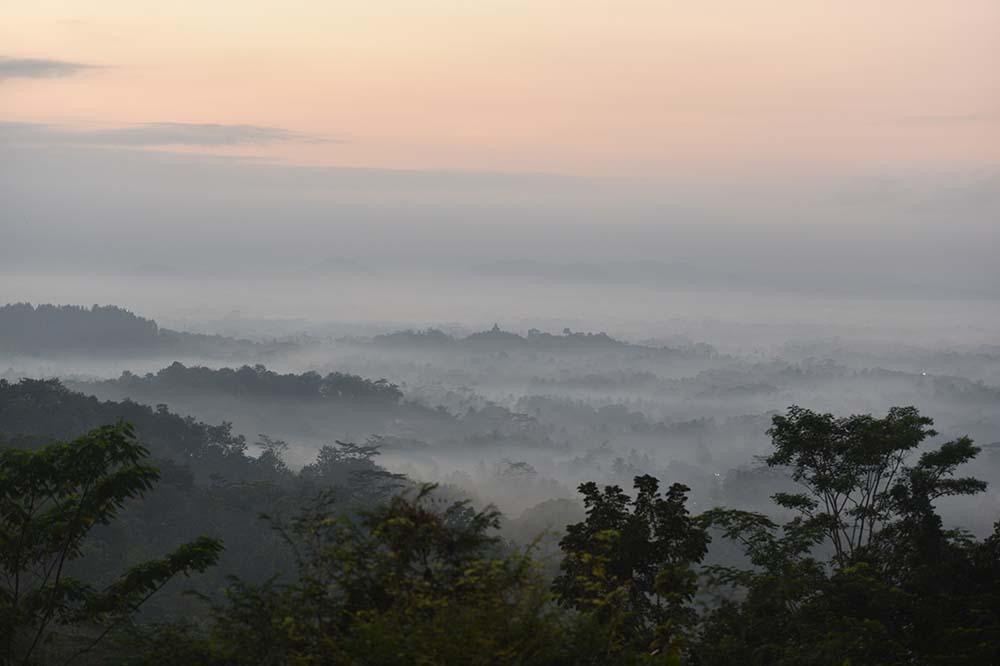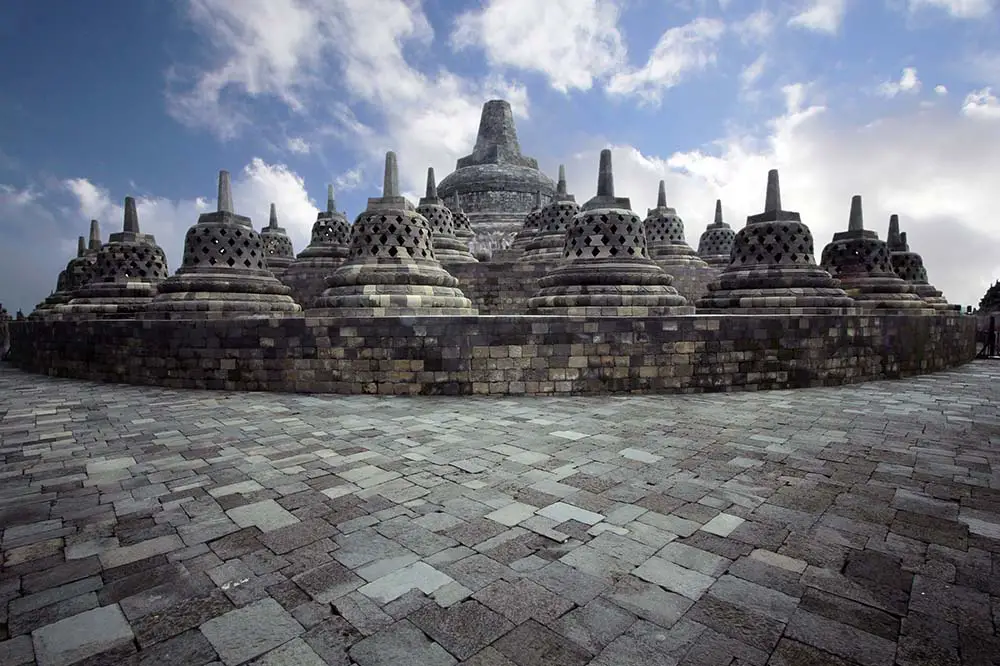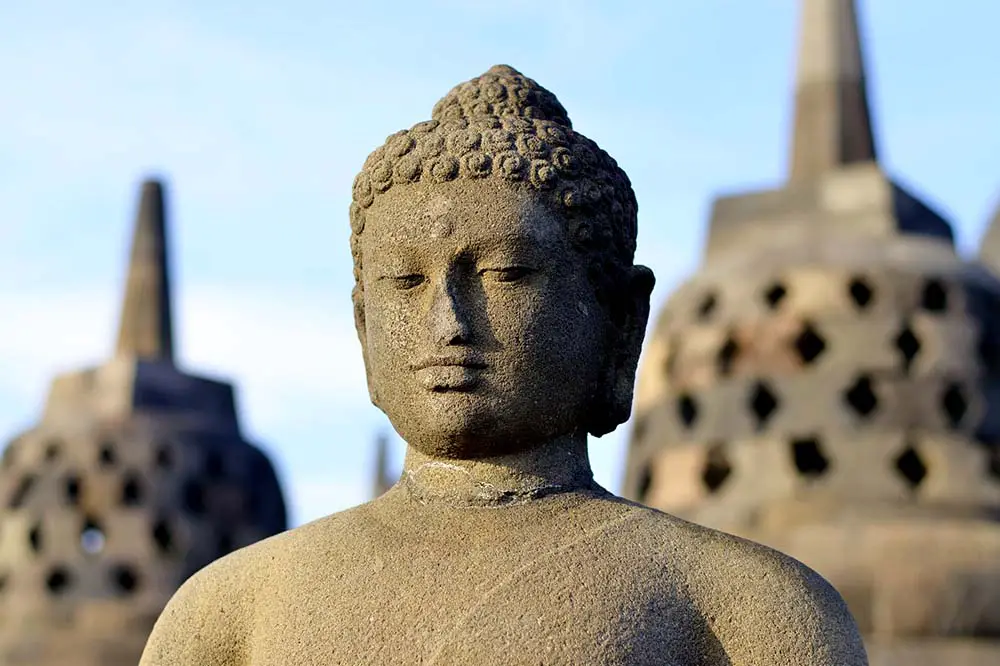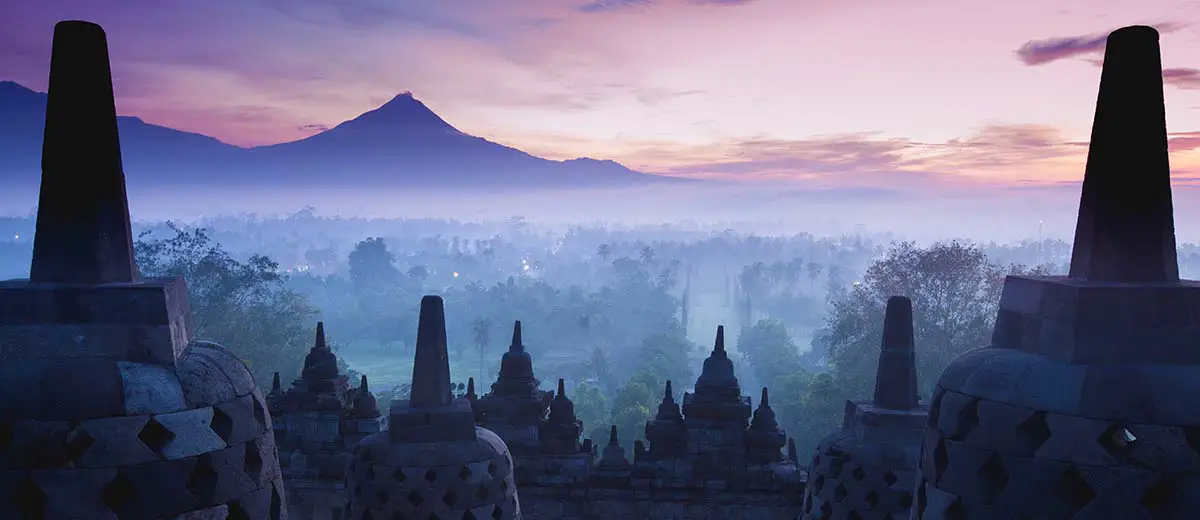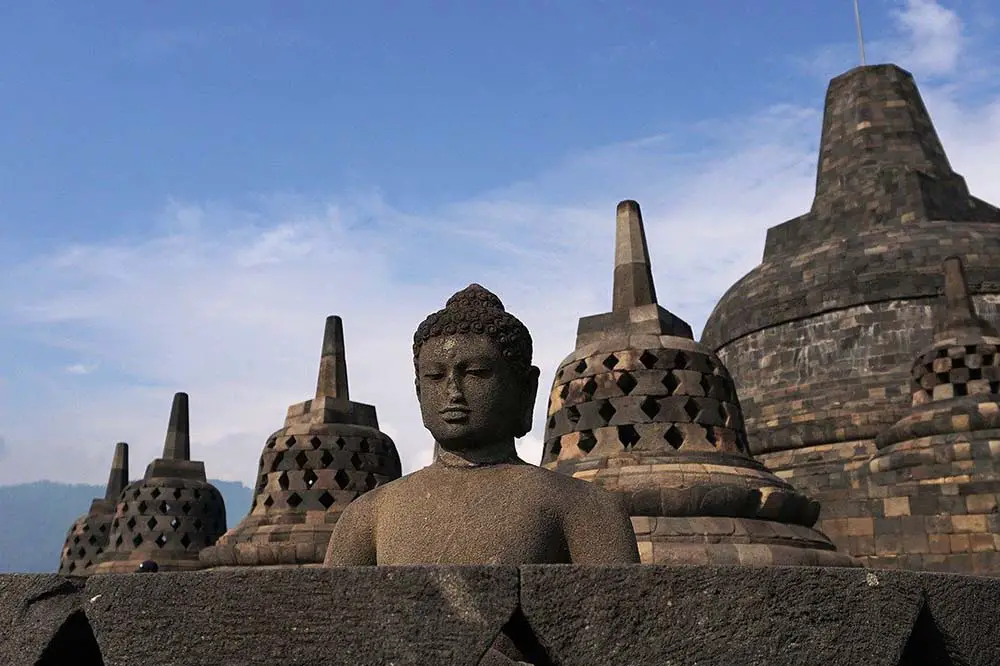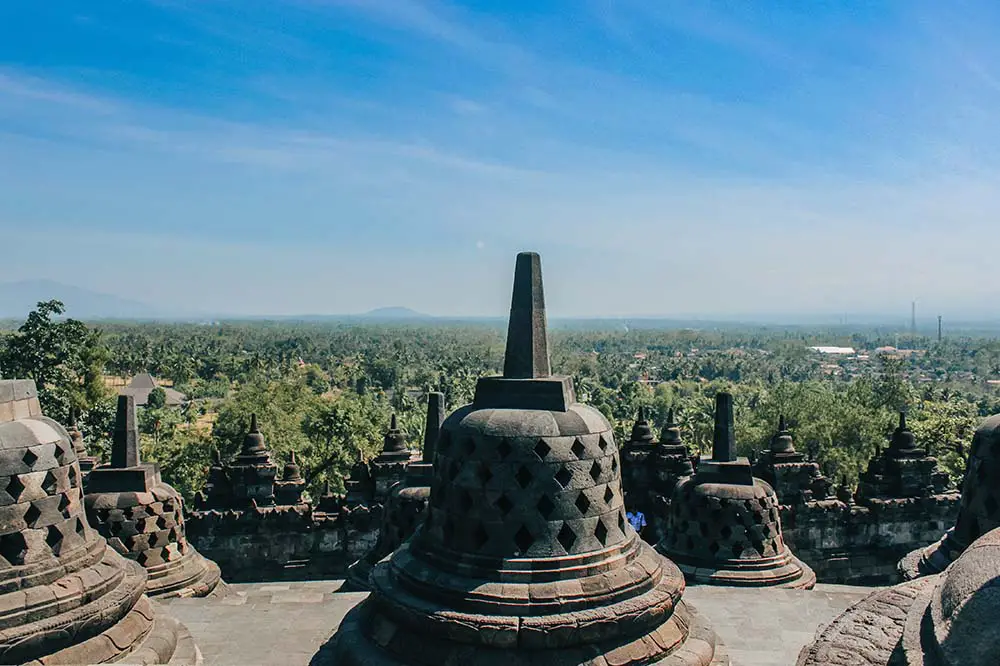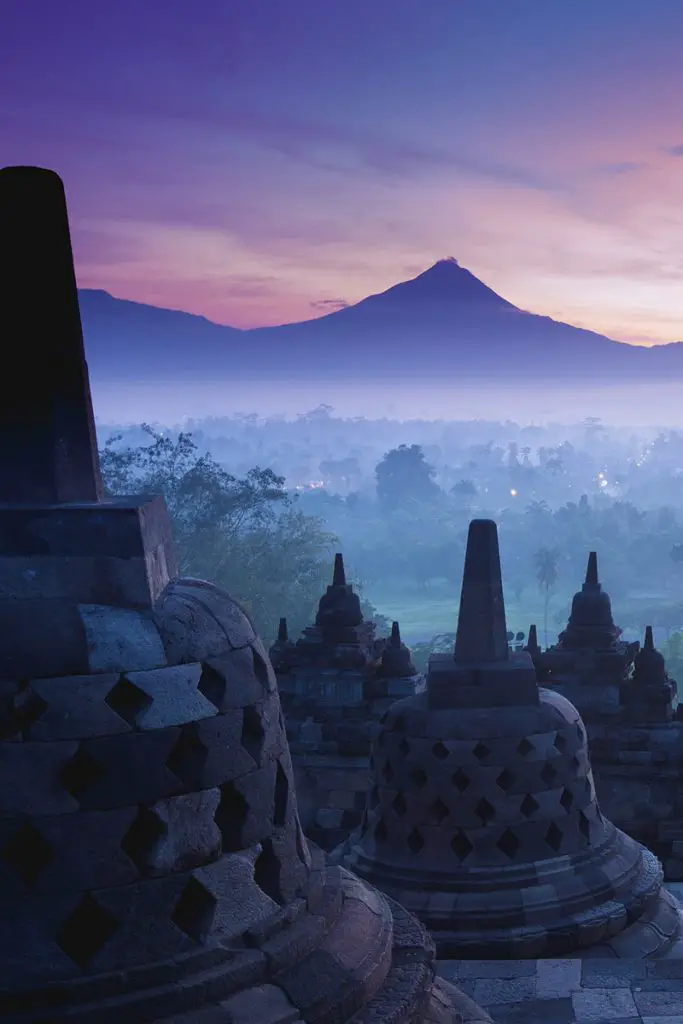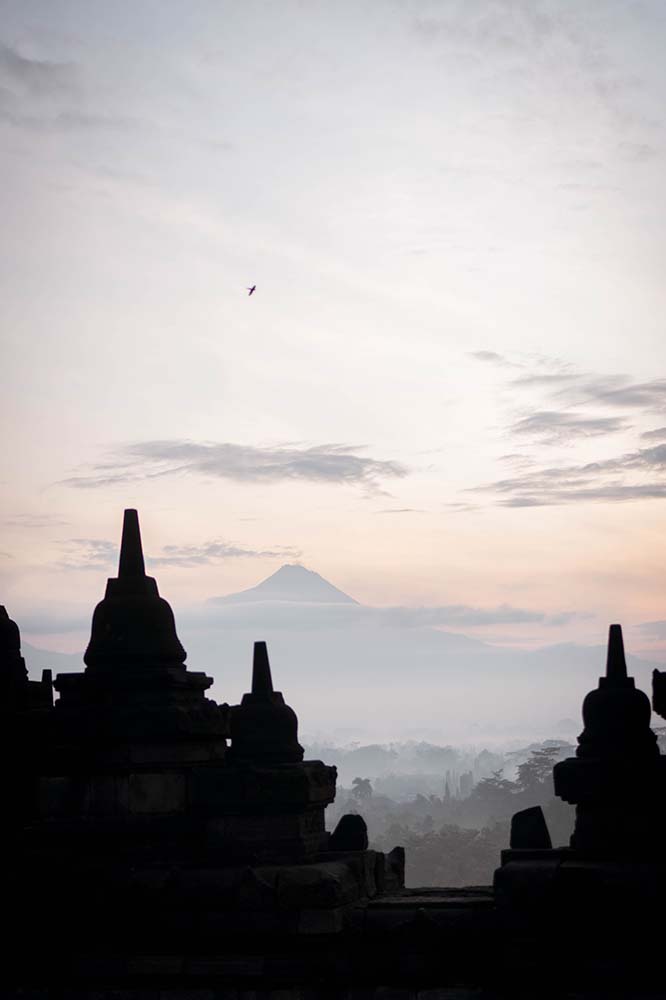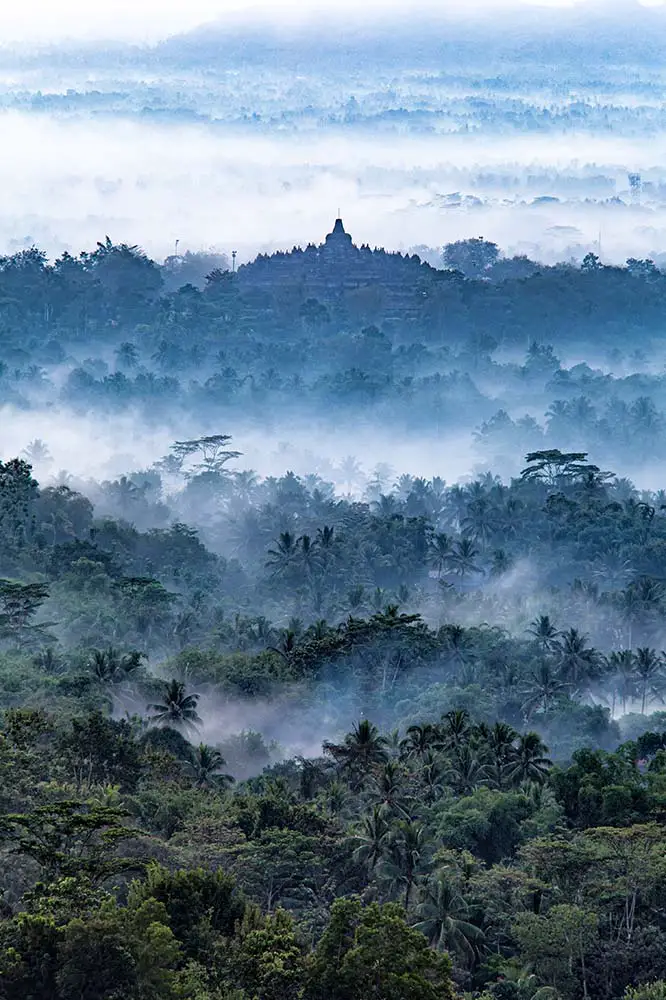Borobudur Temple | Sailendra Dynasty, 8-9th Century
Located across the Bay of Bengal, another important centre for Buddhism was beginning to form at the start of the 7th century. Meaning fortunate, prosperous or happy, the region’s first empire, Srivijaya grew to include large portions of the islands of Sumatra and Java and the Malay Peninsular.
Left: Sherra Triarosdiana from Pixabay & Right: Eugenia Clara on Unsplash
Borobudur was built around the 8th or 9th century and is the largest Buddhist temple in the world, it sits in a spectacular valley surrounded by lush green mountains. The temple was built by the Sailendra Dynasty who ruled over the island of Java at the time and comprises a pyramid-like base with five terraces and three circular platforms, which act as a base for the stupa—its Buddhist monument. It was abandoned for many years, left covered in volcanic ash and enveloped by the jungle, before being discovered again in the early 19th century and restored several times, most recently by UNESCO in 1973.
Excuse me! Are you on Pinterest?! Here are a couple of pins!
Gallery
This post is part of an expanded series taken from 37 Wonders of the World in Chronological Order. You can click the link to read more, watch the video or navigate between individual posts beneath the gallery. Enjoy!
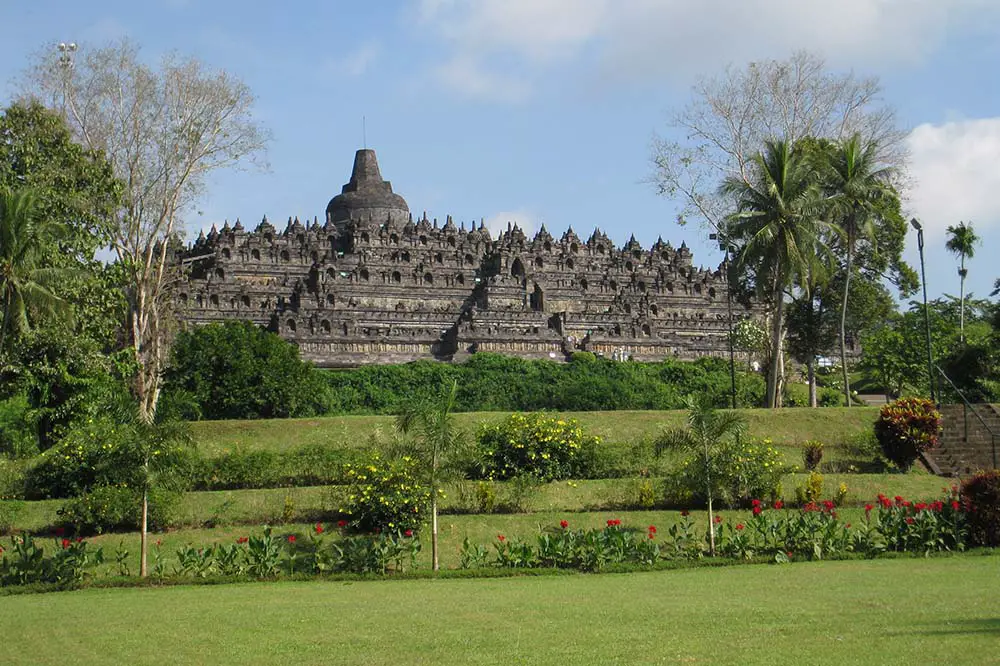
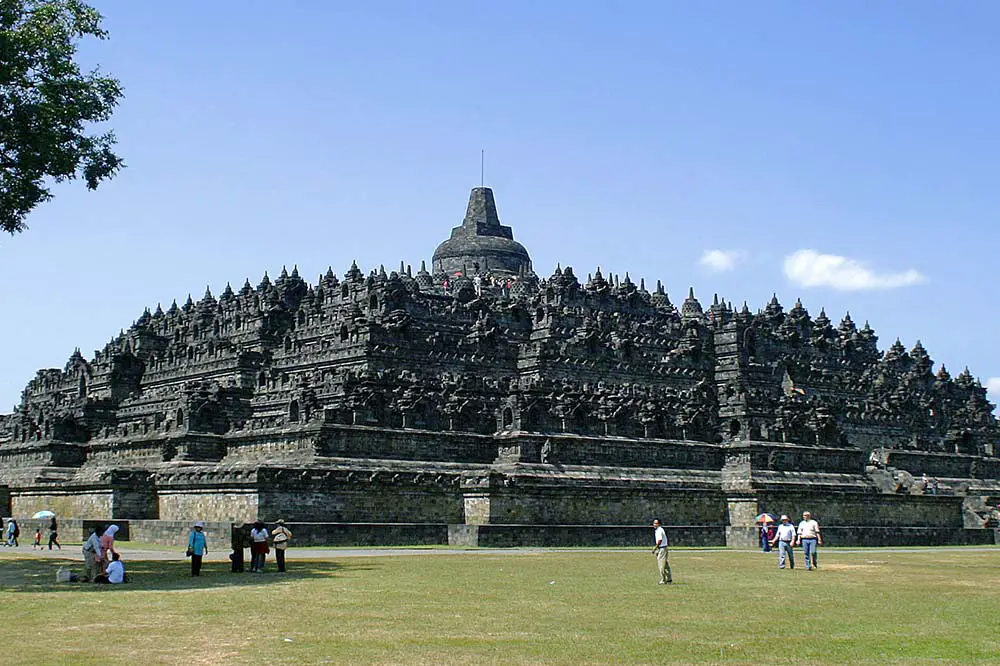
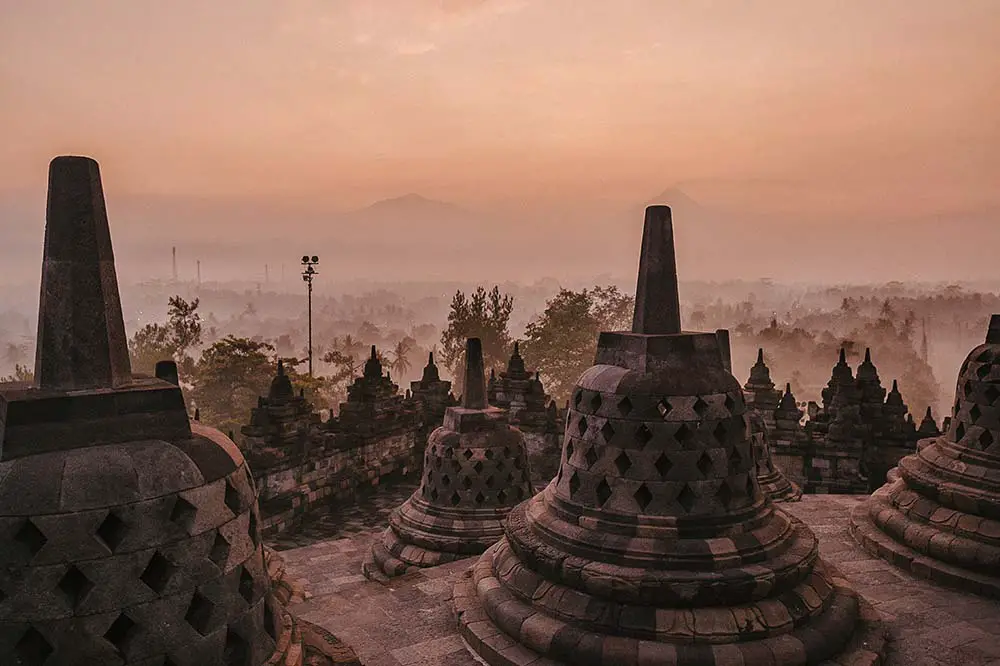
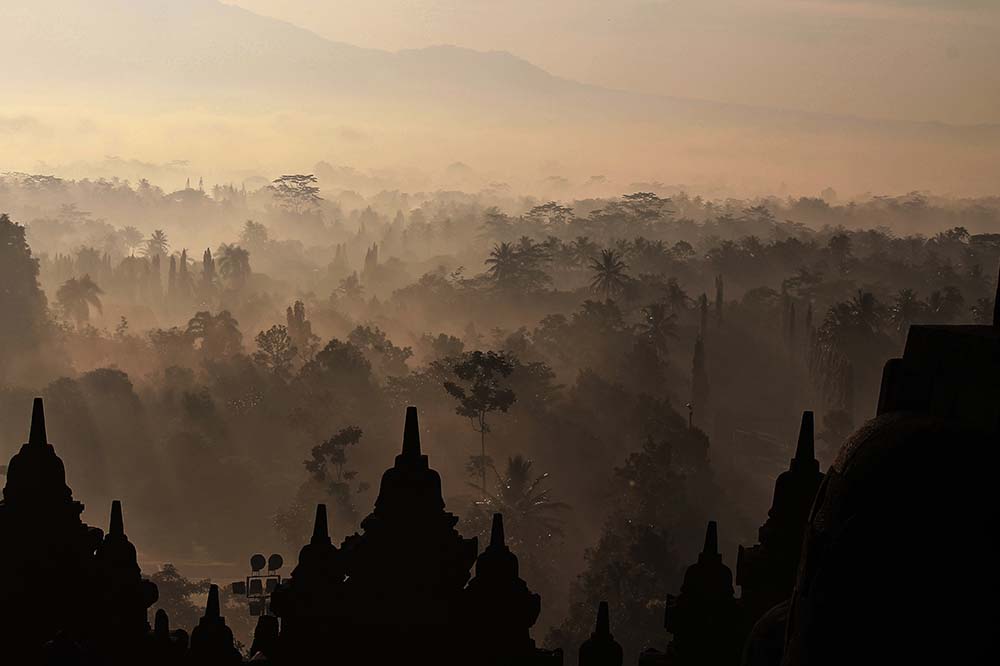
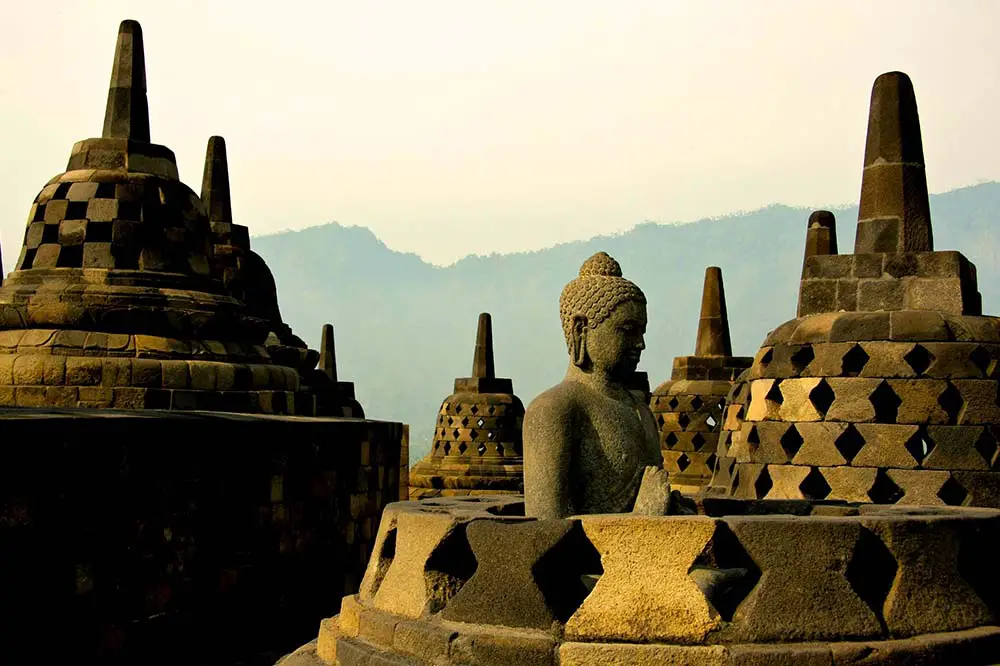
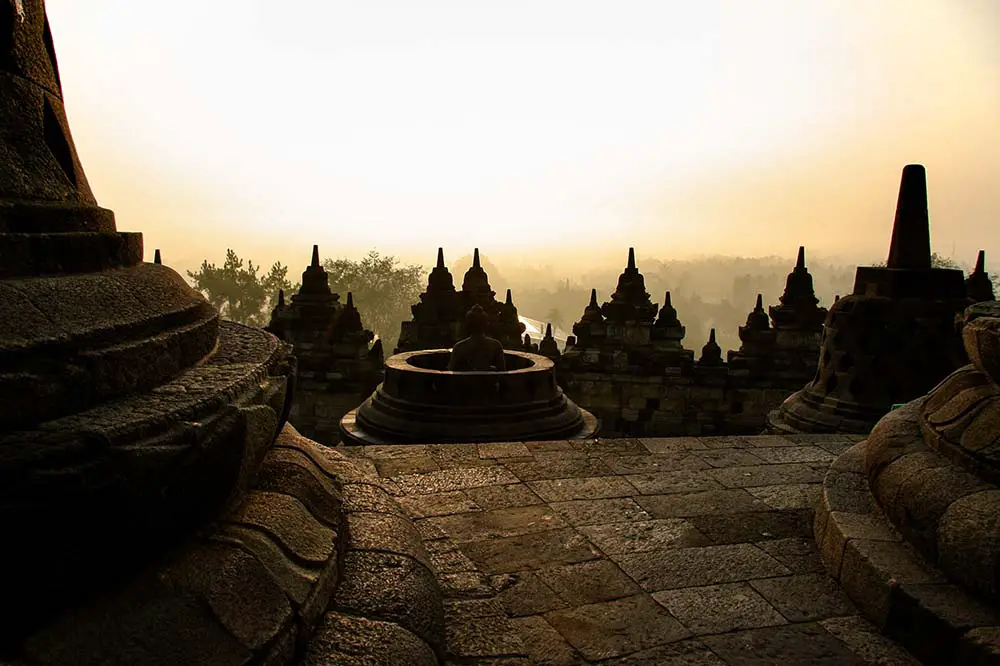
Left: Yi Mun Loo on Unsplash & Right: Kanenori from Pixabay
